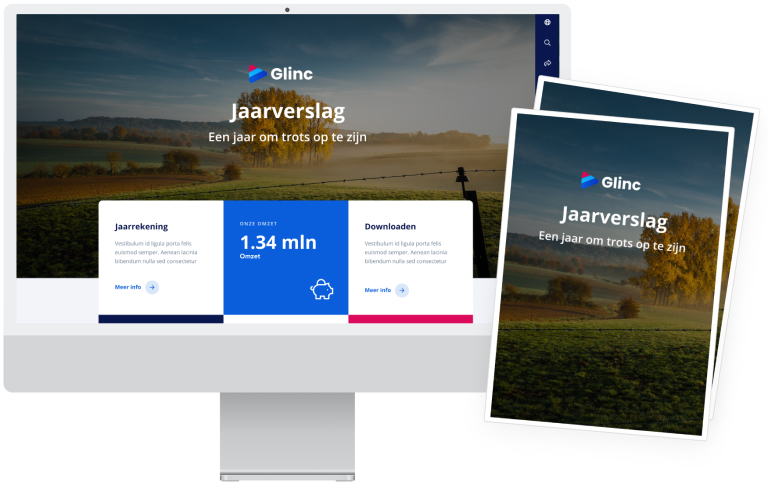How the Netherlands got a new LNG port in just 175 days
How the Netherlands got a new LNG port in just 175 days
Less than six months after the mobilisation of the project organisation, EemsEnergyTerminal was supplying natural gas to the main transmission grid. This was an immense achievement, given that such a construction project normally takes three years. Erich Jurdik (EemsEnergyTerminal project director) and Rob van Heumen (senior regulatory affairs advisor, Gasunie) talk about the factors that contributed to this success. Erich says, ‘The sense of urgency made the entire team feel very determined. There needs to be that same sense of urgency about the energy transition.’

Necessary solution
Erich says, ‘Right from the start of the war in Ukraine it was clear that we had to do something to protect the security of supply. When we started work on the EemsEnergyTerminal it was not yet certain that we would be ready in time for the start of winter. Still, everyone gave it their all, both in the field and at the office.’ Rob adds, ‘The urgency was felt everywhere. I personally had a lot of contact with the Netherlands Authority for Consumers and Markets and the Dutch Ministry of Economic Affairs and Climate Policy. To be able to agree tariffs with the users of the terminal for a longer period of time, we needed an exemption from the conditions of the Dutch Gas Act that deal with the regulation of tariffs. All parties involved worked long hours to ensure that the necessary documents would be submitted on time. As a result, obtaining the exemption took just under four months instead of two years.’
Intensive cooperation
Rob continues, ‘Normally the exemption process is linear. First the Ministry of Economic Affairs and Climate Policy, then the Netherlands Authority for Consumers and Markets, then the European Commission and then back to the Ministry. Now everyone was already involved informally and this accelerated the official procedure.’ Erich mentions the importance of regular consultation: ‘There were monthly consultations between the Ministry, the Province of Groningen, the municipality of Het Hogeland, Groningen Environmental Services, Groningen Seaports and Gasunie. This made it possible to guide the permitting process in the right direction. The lines of communication on site were also very short. We entered into a partnership with Stork, BAM and Fluor and worked as one single, creative team. While we were still designing the one terminal, the other was already being built. Once a week we had management meetings before starting on another week of hard work together.’
Affability and a common goal
Erich says, ‘Of course, having the deadline of 15 September 2022 was stressful. So, this could only work if you remained easy going. When you are friendly to each other you can be more creative together. Moreover, this way you can also speak your mind when necessary, say that something has to be done differently. At the end of 2022, for example, about 300 people with a total of at least 15 different nationalities were working on site. Some were experienced, others were not, but everyone respected each other. That creates a good atmosphere.’ Rob adds, ‘It helps to have a clear goal. Over time you have to make adjustments and accommodations, but the end point remains the same. Such a process also makes it easier to tackle problems together.’
Accepting risks
‘We did take some risks, letting everything run in parallel like this,’ Rob continues. ‘For example, potential customers wanted clarity about the tariffs, but these were based on us getting the exemption. The chance of us not being granted this exemption posed a financial risk.’ Erich adds, ‘Despite that uncertainty, we immediately started preparing for construction. It helped that the government guaranteed some of the costs we incurred already before the exemption was granted. And we took even more risks, for example by ordering material before the design was finalised. As a result, you come across small things that need to be corrected later, like a hose that is too long and needs to be shortened, for example. If you had worked out all the details in advance that would not have been necessary.’
Being less finicky
Erich says, ‘We did a good job. However, that does not mean that you can approach all projects in this way from now on. In a crisis you need to act. But working so hard non-stop, you can’t ask that of people. Besides that, it’s quite possible that the same project will fail the next time. You also have to be lucky. The weather really cooperated. The above-average temperature of the sea water helped a lot, for example. There are certain elements I’d like to see again in future projects. And especially the team spirit, going for it together.’
Energy transition lacks sense of urgency
‘That team spirit arises because you all feel that sense of urgency,’ says Rob. ‘And that is lacking in the energy transition. Here, the impact of the climate crisis is not being felt strongly enough; it all seems so far away. We need to feel the urgency more and see where things can be done more efficiently. In terms of permits, for example, you are bound by the official timeframes for permit granting. There’s not much you can do about that, unless you apply for an emergency permit. Fortunately, the European Commission has plans to speed up the permit granting procedure.’ Erich says, ‘Why do we feel the urgency with the situation with Ukraine but not with the climate crisis? That’s a question for the psychologists. But the EemsEnergyTerminal shows what can be achieved if all people, from the politicians to the people working on site, have the same goal in mind.’

